Places of Science Project Blog
by Charlotte Burford
Museum Curator
17.07.2020
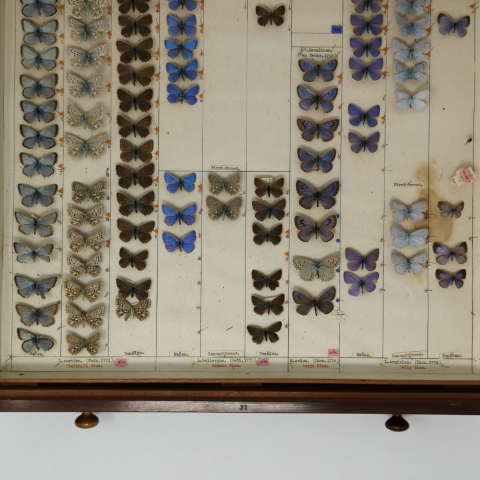
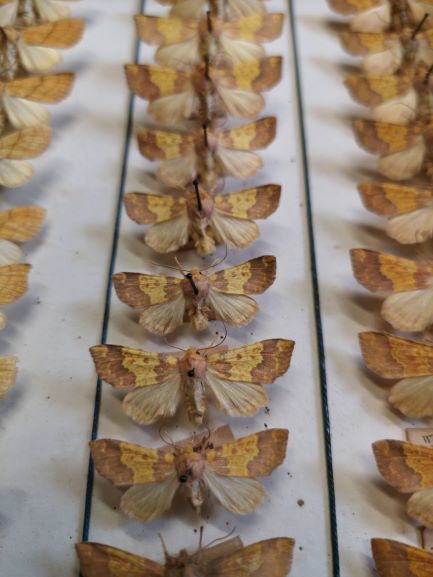
Moth, displayed within entomology drawers.
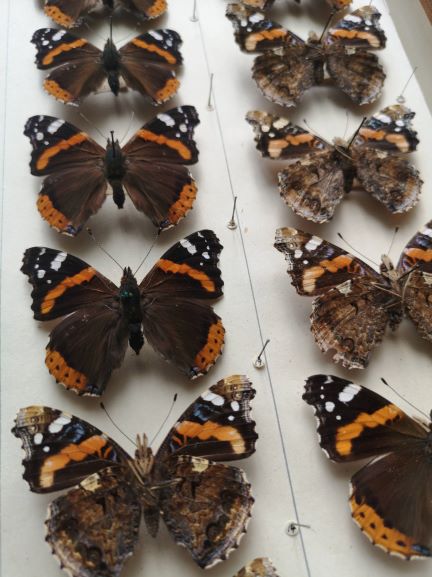
Red Admiral Butterflies, displayed in the Museum.
New beginnings
When I first started at Littlehampton Museum in May 2019 I had no idea that the Museum had such a treasure trove of natural history just sitting in the stores. When I was first showed around the store rooms by a colleague I was shown the Butterfly cabinet and told about the grant from the Royal Society. I wont pretend that I wasn't daunted. Coming from a Country House background, the majority of my collections expertise was around furniture and historic archives, natural history was a completely new beast to me (pun intended).
With the advent of the Documentation Project and with me being brand new to my role and to the Museum there was a bit of a delay in getting the project up and running. But I wanted to get the ball rolling and start showing off this incredible collection. The easiest and simplest thing to do was to get the Butterflies out on display.
The cabinets are extremely old and fragile. Some can be early seen in the early photographs of the Museum in the 1930's, which would make them between 80-90 years old. They have survived moving building twice, although we think that those moves might be the reason for the awful state of our two smaller cases. Despite their vulnarability we felt that it was important to get these out on display. The Butterworth Gallery was transformed into a space where the Butterflies could be explored by the public. We even created an area for colouring in and craft activities to take place all to be inspired by the Butterflies and Moths.
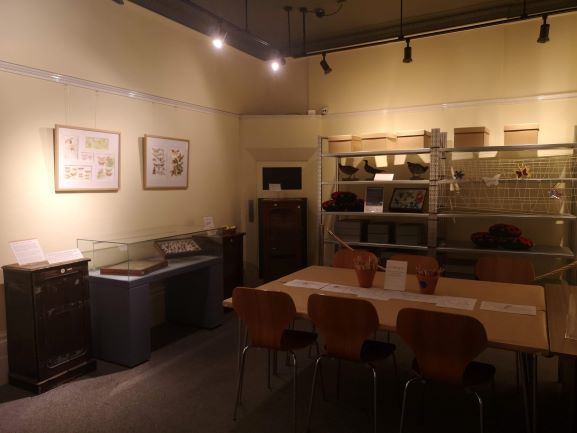
The Butterworth Gallery with the Butterfly cabinets.
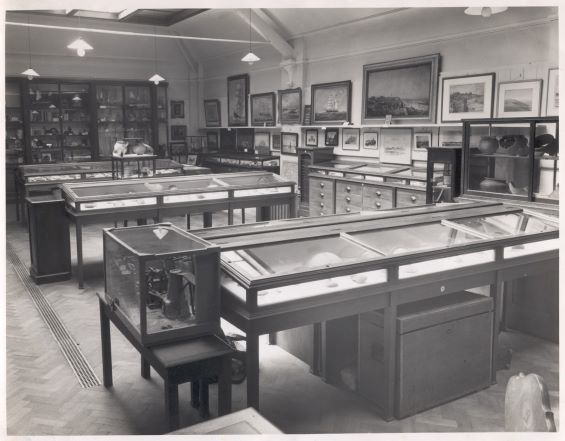
Littlehampton Museum in the 1930s.
Arts and Crafts
One of the ways we thought to engage people with our collection was through arts and crafts. Littlehampton has a strong artistic community and it felt like a great way to get people interested in this underused collection. During a LOCA (Litltehampton Organisation of Community Arts) the Museum was introduced to local Artist Richard Kemp. Richard's artwork focused on the natural world around him, his intricate watercolours filled sketchbook upon sketchbook and his display as part of the LOCA art trail was really popular. I had the idea of asking Richard to produce some artwork based on the Butterfly collection, he very kindly agreed. Over the next few weeks Richard came in several times a week to sketch and paint in front of the public. This meant that the public could speak to Richard about his artwork and the Butterflies. As someone interested in natural history Richard was excellent at engaging others in his passion for nature. The resulting artwork was then displayed alongside the Butterflies, helping the visitors to appreciate the beauty of the specimens and give some life to display. Sometimes it takes an artists eye to make you appreciate natures detail that you might otherwise have missed.
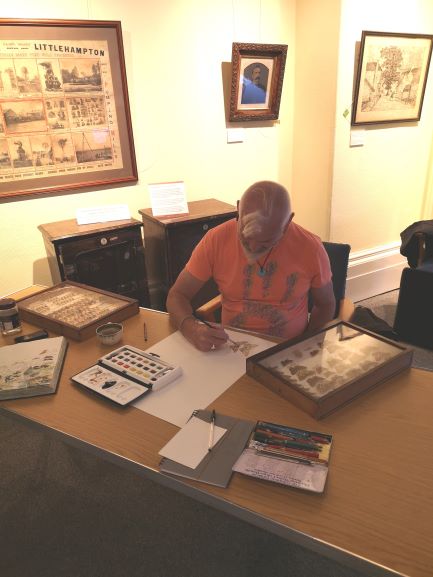
Richard Kemp painting in the Gallery
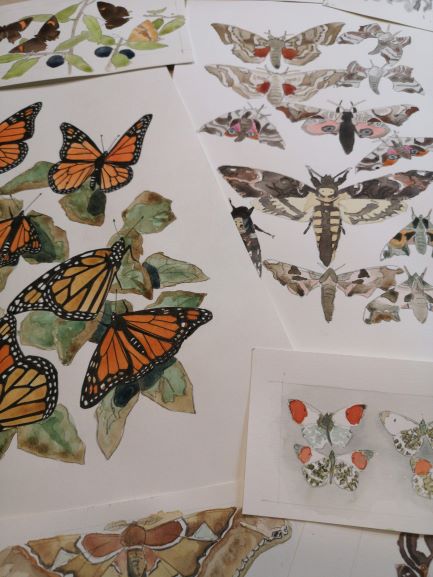
Richard's artwork based on the collection
We also wanted to encourage our younger visitors to explore the collection. In order to do this we created a new booklet that younger visitors could complete during their visit and take home with them to continue the activities. In the gallery we put out magnifying glasses and encouraged visitors to open the Butterfly Cabinets. The gallery had table set up for activities and colouring in and we scheduled a week of arts and crafts activities over half term.
These activities proved to be really popular and as a result we created a more permanent place for families to create their own Butterfly creations.
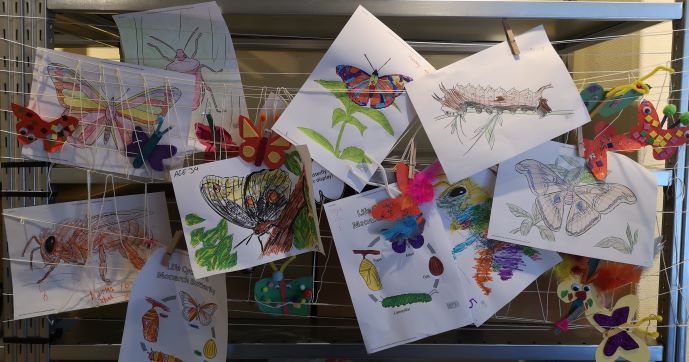
The colourful artwork created over October Half Term 2019.
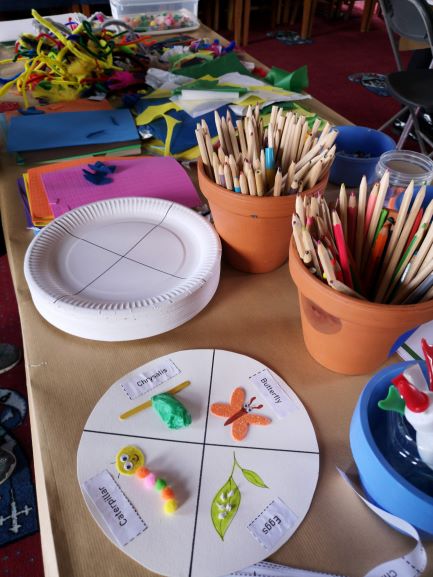
Craft materials all laid out and ready for the first school group.
Creating learning opportunities
One of the things that we wanted to do was to look at how we could use the collection to develop new learning resources. The collection had never been used by school groups and that was something we wanted to change.
We knew we had an upcoming visit by a local primary school so we asked them if there was anything they were studying that revolved around Butterflies. Luckily for us their Reception classes were reading the very hungry caterpillar. As a team we developed a simple but enjoyable programme for the class. The programme featured a session of arts and crafts creating their very own Butterfly life cycle on paper plates and then an opportunity to study the butterflies with one of our team who taught the children the difference between moths and butterflies. This was all finished off with a trail around the Museum to hunt the different types of butterfly hidden around the galleries.
The sessions were a great success and have helped us to look at how we might use these collections in the future as well as now including the new butterfly session in our schools workshops.
Developing new skills
The Places of Science Grant was not just about engaging the public with our scientific collections but it was also about arming our team with the skills and knowledge to be able to continue to care for the collection and to feel confident interpreting the collection for the public.
We made contact with our coastal neighbours in Portsmouth. The Cumberland House Natural History Museum, part of Portsmouth Museums has a vast collection of lepidoptera and natural history. We do not know exactly when but much of the original Natural History Collection from Littlehampton is now cared for by the team at Cumberland House.
Christine Taylor and her team took us on a tour of their stores and taught us about the conservation of Natural History Collections, including how to reline and restring entomology drawers, something that will be vital to the conservation of our collection in the future. We also visited Cumberland House for some much needed inspiration for our own displays. If you've never been, we highly recommend a visit!
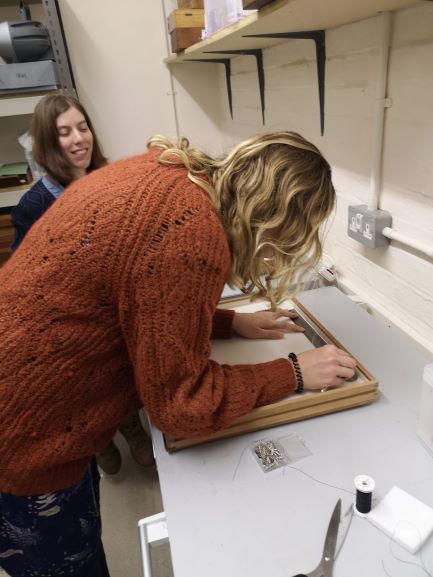
The Museum team learning to restring drawers
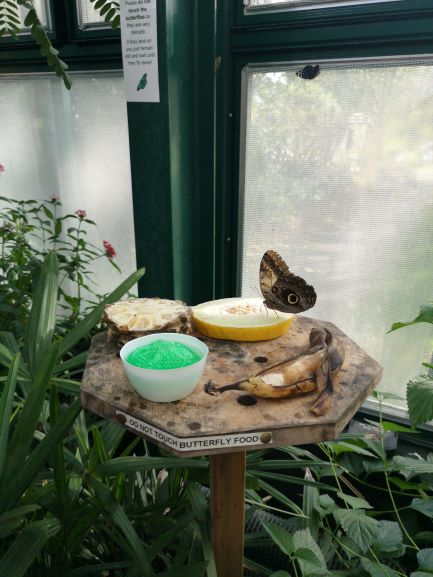
Butterflies feeding in the Cumberland House Natural History Museum Butterfly House.
Looking forwards
When Covid-19 hit the UK we were about to embark on the cataloguing of the Lepidoptera collection. Our original plan had been to have the Butterflies catalogued in front of the public by the work experience students alongside staff. This would have given the public a chance to see the Butterflies up close and see the process of cataloguing.
Students would also have the project of researching the collection and its origins, looking at original documentation from the 1920s and reading through Museum Committee minutes to get a better understanding of how our collection came to be.
Sadly none of this was able to happen. However the Museum Team was able to return to work in June and I was able to start work on creating basic catalogue records for the collection. These basic records mean that we can keep track of the condition of the collection and make it available to the public via our website. We hope that we can record the specimens in more detail in the near future.
What we are doing is planning our new Natural History Display. The project has helped to give us the confidence to create a new permanent display case within the Museum, and thanks to the grant we have the funds to print new panels and purchase the display items needed to show our collection at its best. We hope that the display will be ready by the Autumn.
On top of our new display we have also commissioned an assessment of the collection by a conservator, so that we can plan accordingly to ensure the future of this special collection.
Whilst the project is now coming to an end and we are sad to see the end of it, we have learnt so much and have enjoyed sharing this wonderful part of the collection with all our visitors.